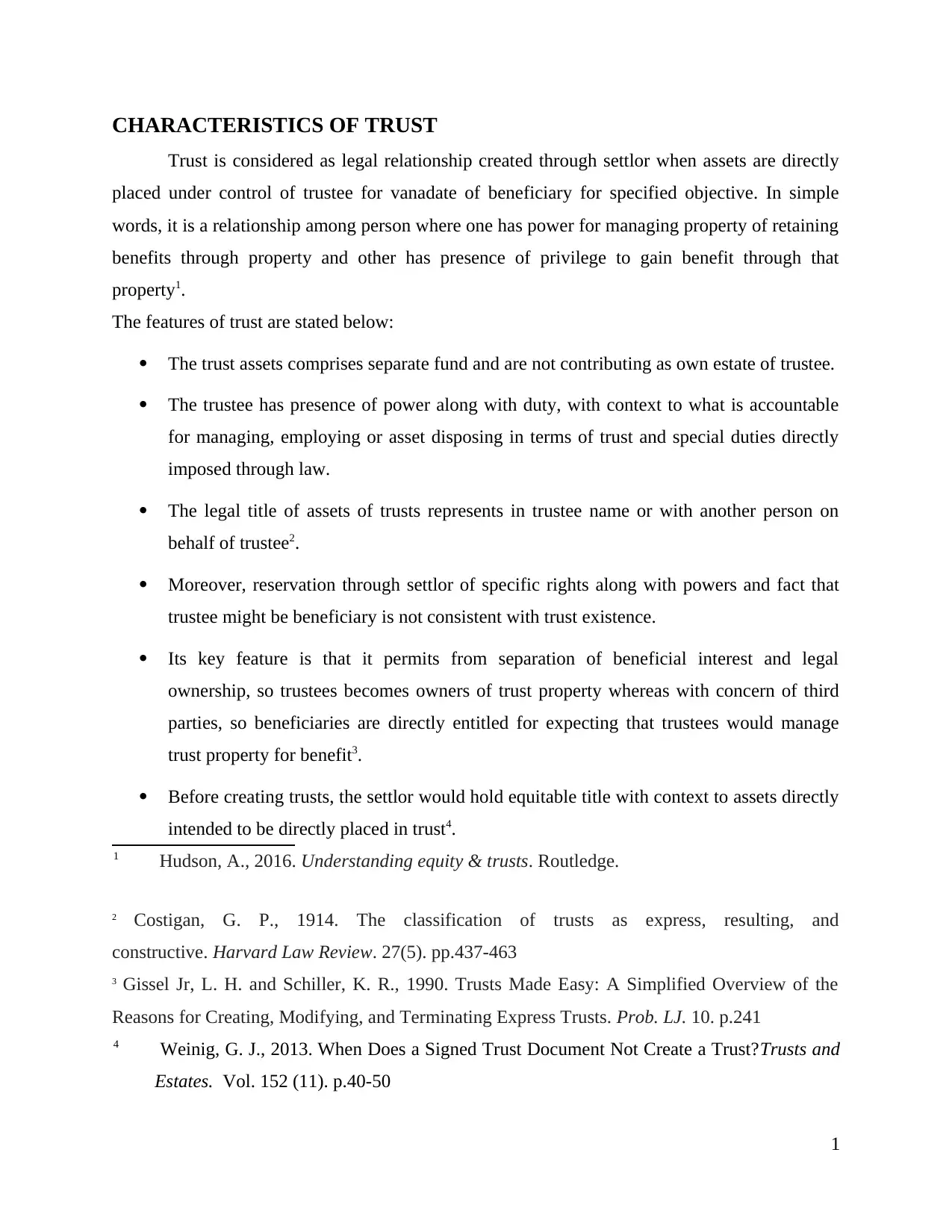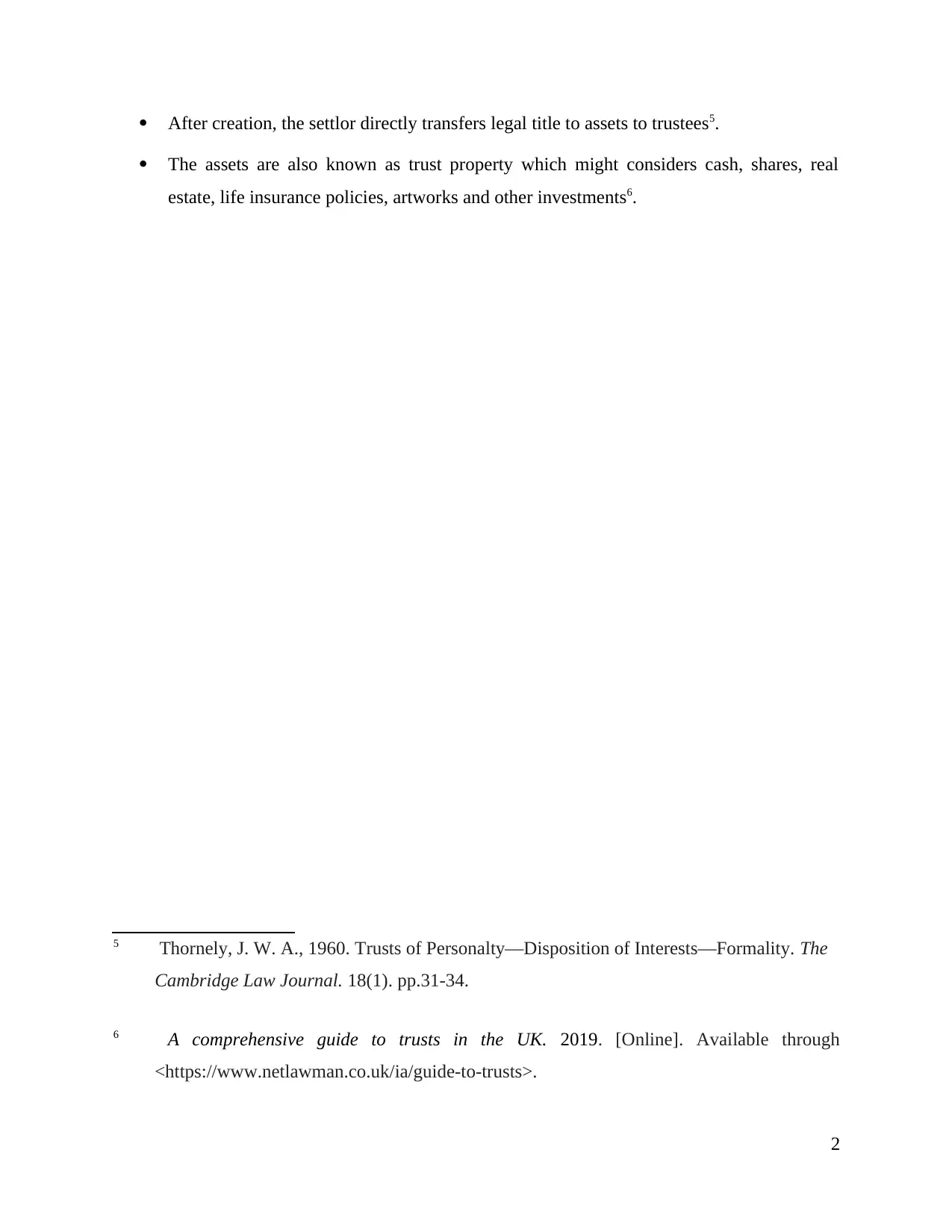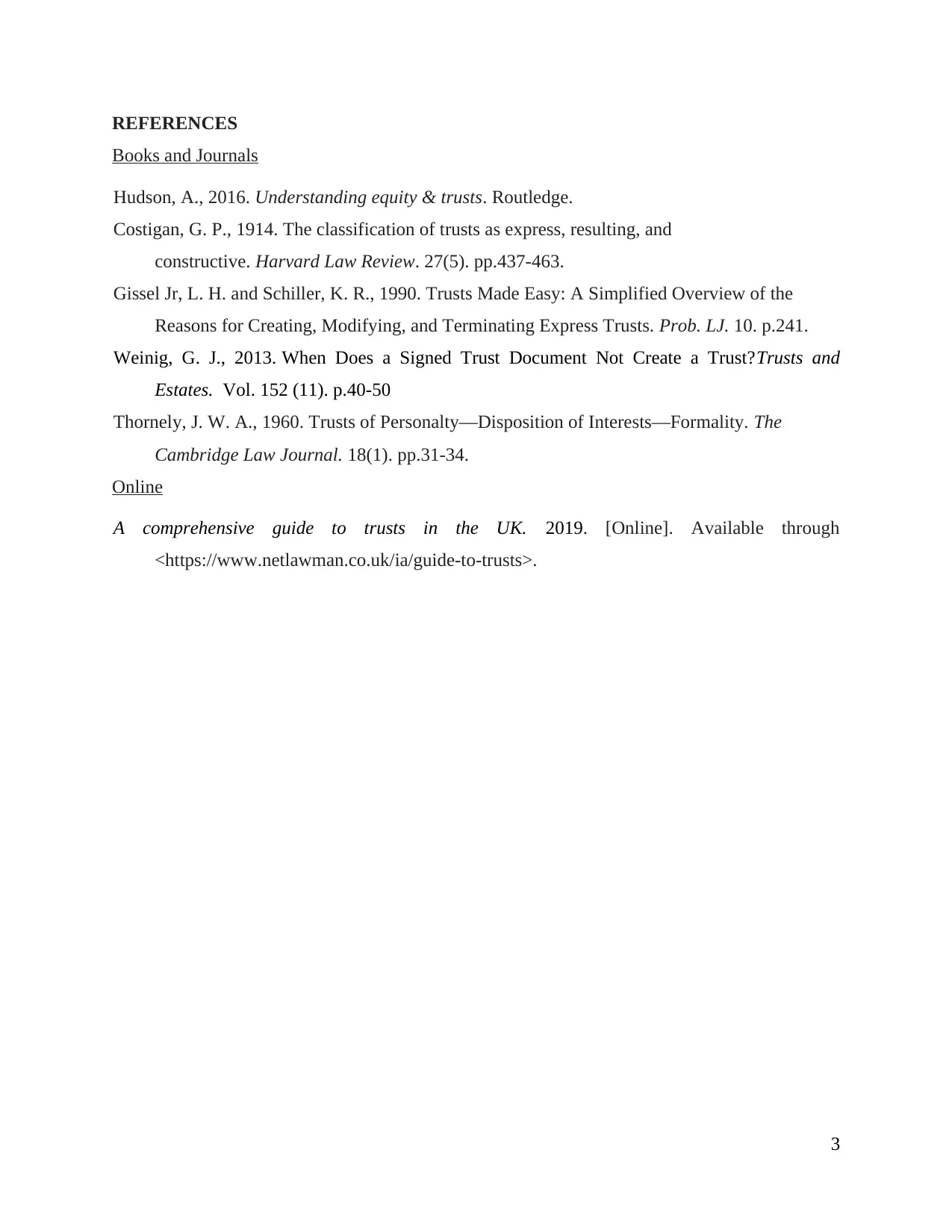Equity and Trusts Assignment: Exploring Trust Characteristics
VerifiedAdded on 2020/12/09
|5
|673
|279
Homework Assignment
AI Summary
This document provides an analysis of the characteristics of a trust within the context of Equity and Trusts law. It defines a trust as a legal relationship established by a settlor, where assets are controlled by a trustee for the benefit of a beneficiary. The assignment outlines key features such as the separation of trust assets from the trustee's personal estate, the trustee's duties in managing the trust property, and the legal title vested in the trustee. It highlights the separation of beneficial interest and legal ownership, the role of the settlor in transferring assets, and the various types of assets that can constitute trust property. The document also includes references to relevant legal texts and online resources, supporting the analysis with established legal principles and definitions.
1 out of 5






![[object Object]](/_next/static/media/star-bottom.7253800d.svg)